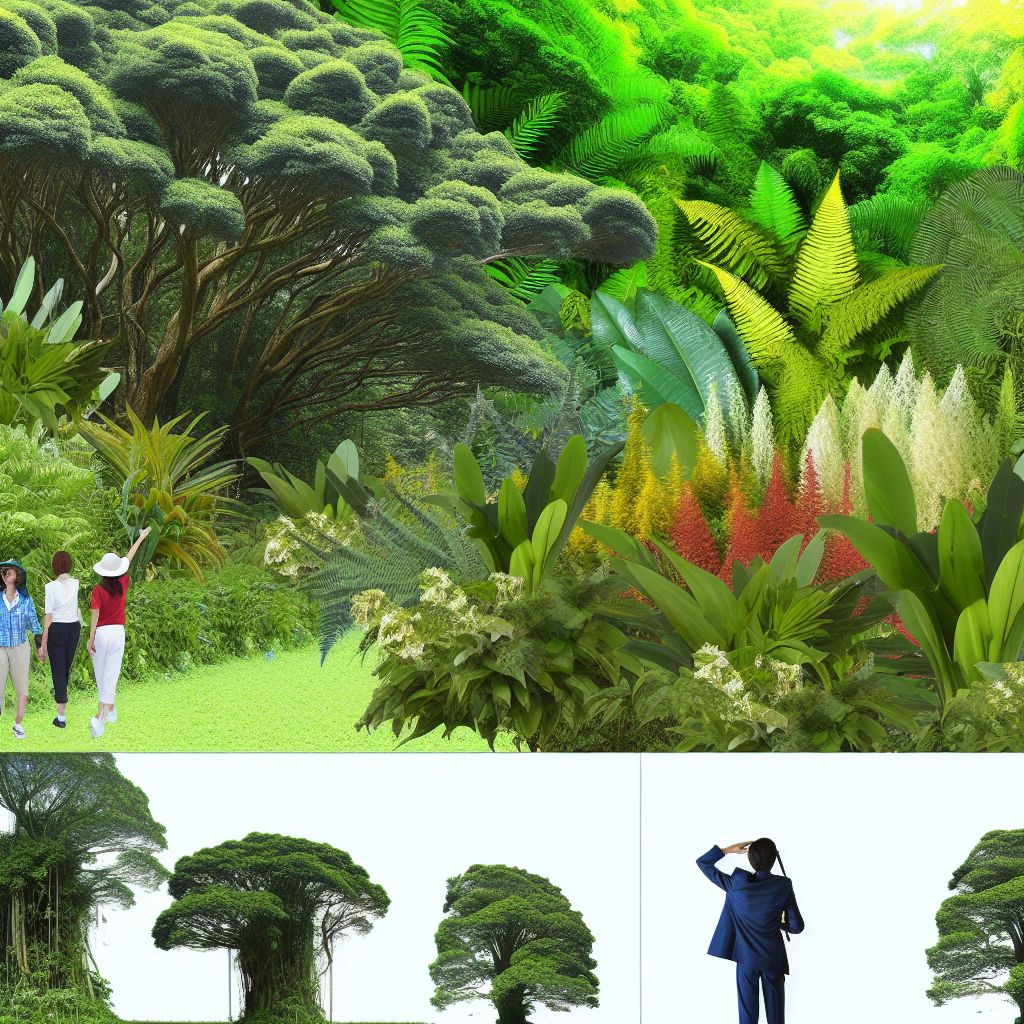Deutsch: Vegetation / Español: Vegetación / Português: Vegetação / Français: Végétation / Italiano: Vegetazione
Vegetation in the travel context refers to the plant life or flora of a particular region or Environment that travelers may encounter or seek out during their journeys. It encompasses all forms of plant life, from grasses and flowers to bushes and trees, and plays a significant role in defining the landscape and ecological character of a destination.
Description

Vegetation is a crucial component of any travel destination, contributing to both the aesthetic appeal and the ecological diversity of the area. It can significantly influence a traveler’s experience by providing scenic beauty, shade, and opportunities for activities such as hiking, bird watching, and photography. Different types of vegetation, from tropical rainforests and arid deserts to mountainous alpine regions, attract different types of tourists looking for various experiences.
Ecotourism, in particular, focuses heavily on promoting and preserving the natural vegetation of a region, often encouraging visits to areas known for their unique or diverse plant life. Conservation efforts are also a key aspect of maintaining vegetation, ensuring that natural habitats are protected for future generations.
Application Areas
The significance of vegetation in travel can be seen in several areas:
- Ecotourism: Travelers visit natural areas to observe and enjoy the vegetation and wildlife.
- Adventure and Outdoor Sports: Activities like hiking, mountain biking, and camping often rely on and celebrate the natural vegetation.
- Photography and Painting: Many artists and photographers travel specifically to capture the unique vegetation of different landscapes.
- Educational Travel: Students and researchers might visit to study the flora and environmental conditions of different regions.
Well-Known Examples
Famous travel destinations known for their distinctive vegetation include:
- The Amazon Rainforest – Known for its vast biodiversity, including numerous plant species that are not found anywhere else on Earth.
- The Black Forest in Germany – Famous for its dense woodlands and fairy-tale aesthetics.
- The Savannahs of Africa – Known for their iconic acacia trees and wide-open grasslands.
- The Mediterranean – Recognized for its olive groves and scrub vegetation known as maquis.
Treatment and Risks
While vegetation enriches travel experiences, there are potential risks involved in visiting wild or natural areas. These include exposure to poisonous plants, allergies, and the risk of forest fires in dry conditions. Travelers should be aware of the local vegetation and any related health advisories or environmental warnings.
Similar Terms
- Flora: Technically refers to the plant life of a region or era, used interchangeably with vegetation in many travel contexts.
- Fauna: Refers to the animal life of a region, often discussed alongside vegetation in the context of biodiversity.
- Natural Landscape: Encompasses all the physical elements of an area, including vegetation, Water bodies, and geological features.
Weblinks
- environment-database.eu: 'Vegetation' in the glossary of the environment-database.eu
- space-glossary.com: 'Vegetation' in the space-glossary.com
- wind-lexikon.de: 'Vegetation' in the wind-lexikon.de (German)
- umweltdatenbank.de: 'Vegetation' im Lexikon der umweltdatenbank.de (German)
Summary
Vegetation is an essential element of the travel experience, offering both beauty and a vital ecological function. It defines the landscape, supports recreational activities, and plays a role in cultural and educational experiences. As such, it remains a key attraction for tourists seeking a connection with nature.
--
Related Articles to the term 'Vegetation' | |
| 'Total Area' | ■■■■■■■■■■ |
| Total Area: In the travel context, total area refers to the complete surface area that a country, region, . . . Read More | |
| 'Swamp' | ■■■■■■■■ |
| A swamp in the travel context refers to a type of wetland characterised by saturated soils, standing . . . Read More | |
| 'Carrickfin' | ■■■■■■■■ |
| Carrickfin in the context of travel refers to a scenic location in County Donegal, Ireland, known for . . . Read More | |
| 'Panda' | ■■■■■■■ |
| Panda: In the travel context, \"panda\" often refers to tourism experiences or destinations centered . . . Read More | |
| 'Kleinsee' | ■■■■■■ |
| Kleinsee is a small coastal town in South Africa, located in the Northern Cape Province. It is often . . . Read More | |
| 'Adventure travel' | ■■■■■■ |
| Adventure travel is a type of tourism that involves exploration or travel to remote, exotic, or physically . . . Read More | |
| 'South America' | ■■■■■ |
| South America is a continent and it can be described as the southern subregion of a single continent . . . Read More | |
| 'Realm' | ■■■■■ |
| Realm: In the travel context, realm often refers to a specific area or domain characterized by its unique . . . Read More | |
| 'Dolphin' | ■■■■■ |
| Dolphin in the travel context refers to tourism experiences and activities centered around observing . . . Read More | |
| 'Dehydration' | ■■■■■ |
| Dehydration in the travel context refers to a condition that occurs when the body loses more fluids than . . . Read More | |
